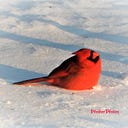Rook
A large corvid that is renowned for gathering in rookeries and cawing loudly and unmusically
Rooks are not unlike crows in appearance, but there is one virtually infallible way of telling them apart. If you see a single rook, it’s a crow, and if you see lots of crows, they’re rooks! Indeed, rooks are notorious for gathering in large numbers, and they can offer a spectacular sight in winter as they assemble in flocks when ready to roost.
Appearance
The rook (Corvus frugilegus) is of similar size to the (carrion) crow at 46 centimetres (18 inches) long, but smaller than the raven and larger than the jackdaw, jay or magpie, these being other members of the corvus family to be seen in the United Kingdom.
The rook is glossy black with traces of purple and green. It has a slender, pointed, light-coloured bill and a patch of white skin on the face. The head has a distinct peak, and the upper legs are covered by loose feathers that give the impression that the bird is wearing a pair of baggy shorts. Males and females have similar plumage.
Behaviour
In flight, rooks are notable for their rounded tails and backswept “hands”. Sometimes they fly with rapid wing-beats and at other times they glide, tumble, roll and dive. On the ground they walk or hop.
